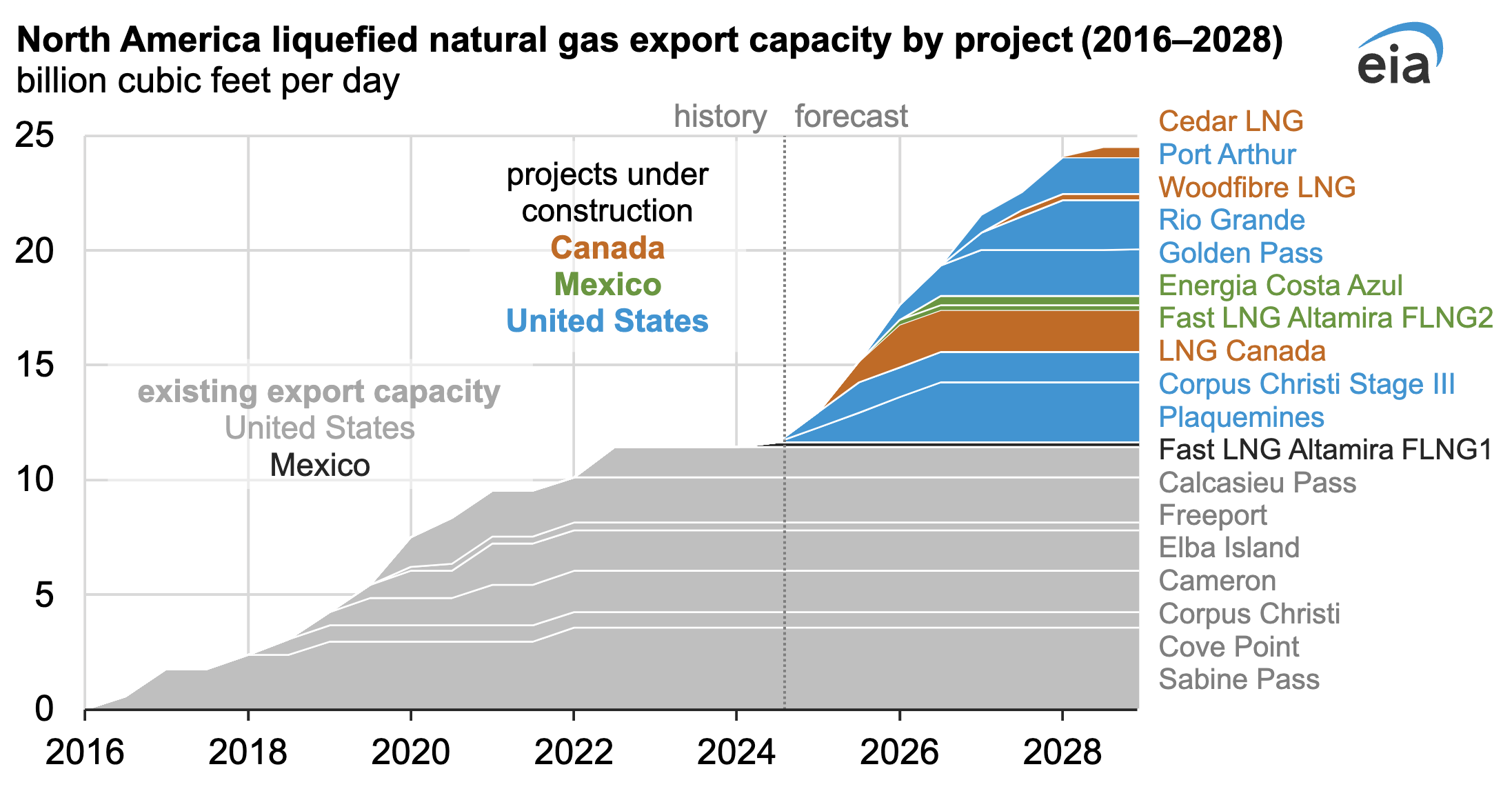By 2029, Qatar is projected to supply 40 percent of the world’s new LNG, thanks to major initiatives like the North Field expansion, which will boost its export capacity by 85 percent. Despite having a population of just under 3 million—slightly smaller than Connecticut—Qatar is making significant moves in the LNG sector. QatarEnergy has secured several long-term LNG agreements, including a recent 15-year deal with Kuwait. Additionally, Qatar has commissioned numerous new vessels to transport its LNG exports. In January, the Biden-Harris administration, influenced by anti-energy environmental groups, temporarily halted the review and approval of U.S. LNG export applications. Although a federal judge in Louisiana overturned this halt in July, deeming it “completely without reason or logic,” the Biden-Harris Energy Department is effectively maintaining the pause. Currently, Qatar, Australia, and the United States are the leaders in the global LNG market. While the U.S. surpassed Qatar as the top LNG exporter last year, Qatar’s extensive expansion efforts and the ongoing export permit freeze could shift the balance. According to Shell, global LNG demand is anticipated to rise by over 50 percent by 2040.
North American LNG Export Capacity Expected to Double
The capacity for North American LNG exports is projected to double over the next three years, rising to 24.4 billion cubic feet per day from 2023’s 11.4 billion cubic feet per day, according to the Energy Information Administration (EIA). This forecast assumes that all LNG projects currently under construction in Mexico, the United States, and Canada will come online as planned. The majority of this expansion is expected to occur in the United States, adding 9.7 billion cubic feet per day, while Mexico and Canada will contribute the remaining 3.1 billion cubic feet per day. This expansion will be driven by 10 new projects under construction in North America, including five in the United States: Plaquemines Phases I and II, Corpus Christi Stage III, Golden Pass, Rio Grande Phase I, and Port Arthur Phase I.

In Canada, three LNG export projects with a combined capacity of 2.5 billion cubic feet per day are under construction in British Columbia on Canada’s west coast. Developers of LNG Canada (1.8 billion cubic feet per day) plan to start LNG exports from Train 1 in the summer of 2025. Woodfibre LNG (export capacity of 0.3 billion cubic feet per day) plans to startup its LNG exports in 2027. Cedar LNG—with the capacity to liquefy up to 0.4 billion cubic feet per day—made a final investment decision in June 2024 and expects to start LNG exports in 2028. These projects will be supplied with natural gas from western Canada.
In Mexico, developers are currently constructing two projects with a combined LNG export capacity of 0.6 billion cubic feet per day—Fast LNG Altamira offshore on Mexico’s east coast and Energía Costa Azul on Mexico’s west coast. Fast LNG Altamira consists of two Floating LNG production units, each with a capacity to liquefy up to 0.199 billion cubic feet per day of natural gas. Natural gas from the United States delivered via the Sur de Texas-Tuxpan pipeline will supply these units. The first LNG cargo from this facility was shipped in August 2024. The Energía Costa Azul LNG export terminal (0.4 billion cubic feet per day) is located at the site of the existing LNG regasification (import) terminal in Baja California in western Mexico. Developers proposed an expansion of this project in Phase 2 by 1.6 billion cubic feet per day. It will be supplied with natural gas from the Permian Basin in the United States.
One U.S. Export License Approved
The Biden-Harris administration granted the first LNG export license since a federal court overturned its pause on issuing permits to ship the fuel. What the Biden-Haris Energy Department approved, however, was an LNG free trade license that does not allow the company to increase its overall LNG exports. It allows the company to ramp up exports to countries that do not have a free-trade agreement with the United States, including allies in Europe, by about 3 percent. The Energy Department granted a five-year license to New Fortress Energy Inc., which is developing the small-scale LNG export plant, Fast LNG, offshore near Altamira, Mexico. New Fortress Energy had requested a license that would last through 2050. Typically, U.S. LNG exporters would receive federal licenses for up to 20 years or longer to sell LNG from their projects, a time frame in line with the long-term contracts sold from the facilities and the capital costs associated with their construction. The Plaquemines project, for example, is a $21 billion investment.
The Fast LNG project has been beset with delays, including a mechanical issue in April, originally targeting 2022 as its start date. New Fortress Energy previously had a license to sell LNG to free-trade agreement nations, which include Mexico and Jamaica, where the company has import operations.
Conclusion
Despite U.S. LNG export capacity growing, the Biden-Harris pause on LNG export permits could mean the U.S. LNG export industry takes a step backward as Qatar captures 40 percent of the new long-term LNG contracts and expands its LNG export capabilities. Qatar is increasing its export capacity by 85 percent and chartering dozens of new ships to move its LNG exports. The United States is adding 5 LNG projects with a capacity of 9.7 billion cubic feet per day to its LNG fleet over the next three years that were previously approved. The only project approved by the Biden-Harris Energy Department since the pause went into place in January has been a five-year license that would allow New Fortress Energy in Mexico to ramp up its LNG exports to countries that do not have a free-trade agreement with the United States, including allies in Europe, by about 3 percent, but not to increase its total LNG exports. Playing politics with investments whose capital outlays can exceed $20 billion apiece does not inspire confidence in the Americans whose jobs and futures are dependent upon our world-class energy resources.